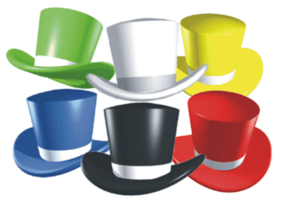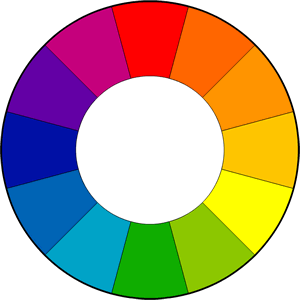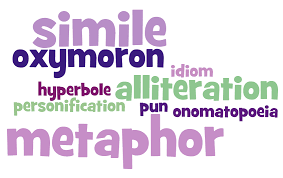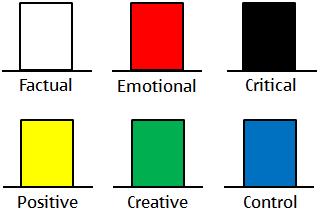What Do You Know About 'the Six Thinking Hat'?

The Six Thinking Hat is a book that describes the process or a technique that was introduced to describe how the thoughts function in group discussions and individual thinking. How well do you know about it?
- 1.
In which year was Six Thinking Hat Method introduced?
- A.
1985
- B.
1986
- C.
1987
- D.
2008
Correct Answer
A. 1985Explanation
The Six Thinking Hats Method was introduced in 1985.Rate this question:
-
- 2.
Who introduced the theory, the Six Thinking Hats?
- A.
Edward De Bono
- B.
Robert Solow
- C.
Nicholas Saunderson
- D.
James Dunworthy
Correct Answer
A. Edward De BonoExplanation
Edward De Bono is the correct answer because he is widely recognized as the creator and introducer of the Six Thinking Hats theory. De Bono is a renowned psychologist, author, and consultant who developed this theory as a tool for enhancing critical thinking, problem-solving, and decision-making processes. The Six Thinking Hats approach involves using six different perspectives or "hats" to explore and analyze a problem or situation, allowing individuals or groups to consider multiple viewpoints and generate more creative and well-rounded solutions.Rate this question:
-
- 3.
What does the White Hat stand for?
- A.
Creativity
- B.
Caution
- C.
Information
- D.
Optimism
Correct Answer
B. CautionExplanation
The White Hat represents caution because it symbolizes the need for logical thinking and careful analysis. In the context of problem-solving or decision-making, the White Hat encourages individuals to gather and evaluate information objectively, without bias or emotions. It emphasizes the importance of considering all relevant facts and figures before making a judgment or taking action. By wearing the White Hat, one adopts a cautious and analytical mindset, ensuring that decisions are based on rationality and prudence.Rate this question:
-
- 4.
All the following colors were represented in the Six Thinking Hat Method except...?
- A.
Yellow
- B.
Red
- C.
Black
- D.
Brown
Correct Answer
D. BrownExplanation
The Six Thinking Hat Method is a technique used for group discussions and decision-making. Each hat represents a different thinking style or perspective. The colors that are typically represented in this method are yellow, red, black, and green. Brown is not one of the colors associated with the Six Thinking Hat Method. Therefore, the correct answer is brown.Rate this question:
-
- 5.
Which color of hat represent Creativity?
- A.
Green
- B.
Yellow
- C.
Brown
- D.
Red
Correct Answer
A. GreenExplanation
Green is often associated with nature and growth, which can symbolize creativity. Additionally, green is known to have a calming and soothing effect on the mind, which can enhance creative thinking. Many artists and designers also use green as a color choice to represent creativity and innovation. Therefore, green can be considered as the color of hat that represents creativity.Rate this question:
-
- 6.
What does the Red Hat stand for in the thinking process?
- A.
Understaning
- B.
Information
- C.
Emotions
- D.
Anger
Correct Answer
C. EmotionsExplanation
The Red Hat in the thinking process represents emotions. It signifies the need to consider and express emotions, feelings, and intuition when making decisions or evaluating situations. This aspect allows individuals to explore their gut reactions, hunches, and personal perspectives without needing to provide logical reasoning or justifications. By including emotions in the thinking process, a more holistic and balanced approach to decision-making can be achieved.Rate this question:
-
- 7.
Which of the following does not represent an importance of the thinking technique?
- A.
It improves communication
- B.
It improves decision making process
- C.
It once one to think without risks
- D.
It eliminate brain cells
Correct Answer
D. It eliminate brain cellsExplanation
The given answer states that the thinking technique does not eliminate brain cells. This implies that the thinking technique does not have any negative impact on the brain's functioning or health. The other options provided in the question, such as improving communication and decision-making process, suggest the positive aspects and benefits of the thinking technique. However, it is important to note that the given question is incomplete and there may be other valid explanations for the correct answer.Rate this question:
-
- 8.
Which literary device is employed by the writer in conveying his message?
- A.
Simile
- B.
Metaphor
- C.
Biblical allusion
- D.
Paradox
Correct Answer
B. MetaphorExplanation
The writer employs a metaphor in conveying his message. A metaphor is a figure of speech that compares two unlike things without using "like" or "as". It allows the writer to create a vivid and imaginative description by equating one thing to another. By using a metaphor, the writer can convey his message in a more engaging and impactful way, making the reader think deeper and draw connections between the two things being compared.Rate this question:
-
- 9.
Which color of hat is represented with facts, figures, data and information?
- A.
White
- B.
Blue
- C.
Red
- D.
Green
Correct Answer
A. WhiteExplanation
The color white is often associated with purity, neutrality, and objectivity. In many contexts, when facts, figures, data, and information are presented, they are expected to be unbiased and based solely on evidence. Therefore, the color white is commonly used to symbolize this objective and factual representation.Rate this question:
-
- 10.
How can you best define the Six Thinking Hat?
- A.
It defines a form of thinking
- B.
It defines a form of eating
- C.
It defines a form of imagination
- D.
It defines a form of reflection
Correct Answer
A. It defines a form of thinkingExplanation
The Six Thinking Hat is a method developed by Edward de Bono that defines a form of thinking. It is a technique used to encourage parallel thinking and improve decision-making by considering different perspectives. Each "hat" represents a different type of thinking, such as logical thinking (white hat), emotional thinking (red hat), creative thinking (green hat), etc. By wearing these metaphorical hats, individuals can approach a problem or situation from multiple angles, leading to more comprehensive and effective solutions.Rate this question:
-
Quiz Review Timeline +
Our quizzes are rigorously reviewed, monitored and continuously updated by our expert board to maintain accuracy, relevance, and timeliness.
-
Current Version
-
Mar 20, 2023Quiz Edited by
ProProfs Editorial Team -
Dec 20, 2016Quiz Created by
Joe
 Back to top
Back to top












